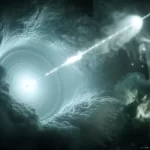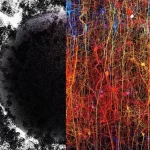Key Takeaways:
- China’s Chang’e-4 spacecraft carried the Lunar Micro Ecosystem to the moon, attempting to grow various life forms, including cotton, potato, and rapeseeds. Only the cotton plant showed brief growth, sprouting two leaves before succumbing to cold temperatures.
- Despite the experiment’s limited success, it marks a crucial step toward understanding the challenges of sustaining life on the moon and space, prompting further studies on lunar survival for various life forms.
- NASA emphasizes the necessity of cultivating plants in space for prolonged missions, citing benefits like fresher nutrients, improved taste, and reduced reliance on pre-packaged meals.
- Beyond physical sustenance, psychological benefits of gardening in space are recognized by NASA, aiming to create a more pleasant environment and support astronauts’ mental well-being during long missions.
- The focus on space dining involves research on astronauts’ preferences, emotional needs, and countering space-specific issues like the loss of the sense of smell, highlighting the holistic approach to sustaining human health in space.
In a historic mission, China’s Chang’e-4 spacecraft not only landed on the moon’s far side but also initiated a pioneering experiment in lunar cultivation. The Lunar Micro Ecosystem (LME) transported within the spacecraft housed various life forms, including potato, rapeseeds, and cotton seeds, alongside yeast, fruit fly eggs, and Arabidopsis thaliana, a common weed.
While most organisms failed to endure the lunar conditions, the cotton seeds showed promise, with a surprising development captured through a new 3D reconstruction. Contrary to initial assumptions, the cotton plant exhibited growth, sprouting two leaves before succumbing to the harsh cold after approximately two weeks. This modest success signals a significant advancement in comprehending the challenges and possibilities of sustaining life on the lunar surface.
Xie Gengxin, the lead scientist from China’s advanced Technology Research Institute at Chongqing University, expressed intentions not to publish scientific papers based on this particular research endeavor. However, the focus remains on further exploration to comprehend how diverse life forms could potentially endure and thrive in the lunar environment.
NASA, recognizing the criticality of cultivating plants in space, underscores the necessity for sustainable plant growth for extended missions. The agency emphasizes the limitations of relying solely on supplements and prepared meals for astronauts’ sustenance during deep space exploration.
Fresh produce becomes imperative due to the breakdown of nutrients over time and the potential acceleration of this process due to radiation exposure. Cultivating plants on spaceships offers astronauts access to fresher nutrients and enhances the taste of food, addressing logistical challenges while reducing reliance on pre-packaged provisions.
Beyond the physiological requirements, NASA acknowledges the psychological benefits inherent in cultivating greenery in space. Drawing from experiences on the International Space Station, the agency notes the positive impact of flowers and gardens on astronauts’ mental well-being, emphasizing the psychological resonance of Earthly elements during space journeys.
The endeavor to enhance space dining experiences forms a significant part of NASA’s research initiatives. In addition to providing comfort food and holiday meals on missions, extensive studies focus on astronauts’ dining preferences, exploring communal versus solo dining and the potential benefits of self-prepared meals. Furthermore, research endeavors delve into understanding emotional needs, countering space-specific sensory issues like the loss of smell, and overall enhancing the dining experience to support astronauts’ holistic well-being.
Scott Smith, a NASA nutritionist, highlights the agency’s ultimate concern for the human aspect of space travel, emphasizing the importance of addressing not just physical sustenance but also the psychological and emotional needs of astronauts during extended missions.


